My previous article covered manipulated western blot data in the papers authored by Paul Workman, president and CEO of the huge Institute of Cancer Research (ICR) in London, part of University of London. It seems now, with nobody being above him, Workman was investigating himself, and found (at the present count) two female colleagues guilty of placing fake data into his papers, primarily the ICR emeritus professor Ann Jackman. One paper was retracted, another received an outrageous correction. There, the paper’s first author, Workman’s former PhD student and now ICR Professor Udai Banerji, laid all the blame with Jackman, and then reproduced the offending western blot in what the journal declared to be reliable manner, so the findings of a paper are not affected despite western blot some unreliable women were accused to have faked.
If this sounds bizarre: ICR’s troubles with research integrity and basic ethics did not start wiht Workman. The previous CEO, who now left for UCSF in USA, Alan Ashworth, and his former right-hand man, since 2017 ICR professor Chris Lord, have their own impressive, but hitherto ignored, common record on PubPeer. Not that anyone cares, after all these are gentlemen.
This is how the research charity ICR wants to cure cancer using your donations. By faking western blots and who knows what other data, and run clinical trials based on this. The ICR men behind that get richer and richer, but will any cancer patients be helped with such rigged research?
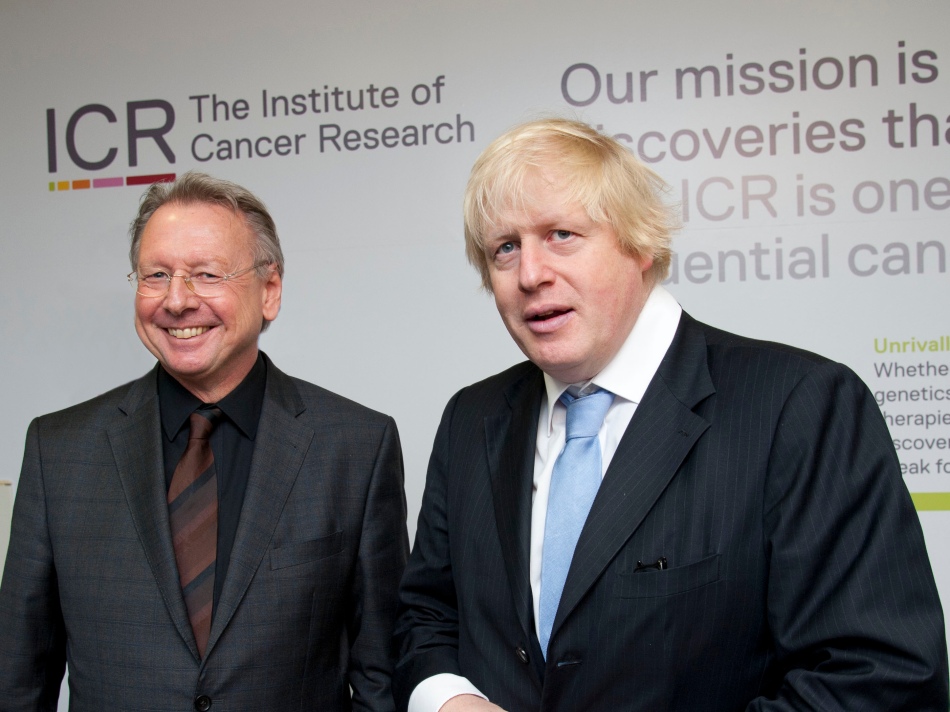
The by far worst Workman co-authored paper presented in my article was Sain et al, Molecular Cancer Therapeutics 2006. It was so ridiculously fake that the US publisher, the cancer research society AACR, had no other option but to retract it. Just look at its Figure 6 (there is much more on PubPeer):
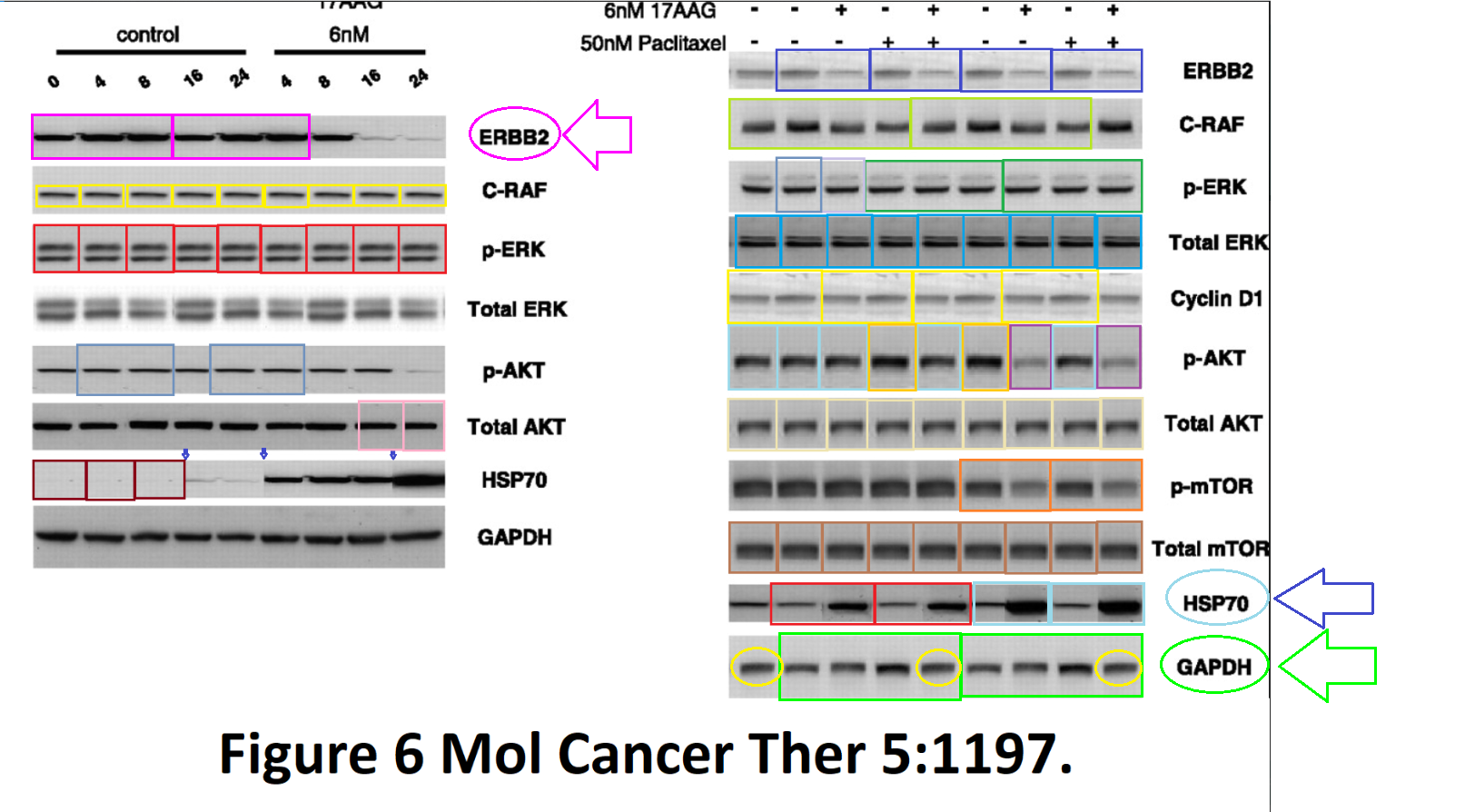
This is the retraction notice, published in the journal’s September 2018 issue:
“This article (1) is being retracted at the request of the authors. The work is in two main parts. The first part is a description of the relevant characteristics of the human ovarian cancer cell lines used and an analysis of the efficacy of the combination of the HSP90 inhibitor 17-AAG with paclitaxel and carboplatin. The latter part shows the effect of the single agents and drug combinations on HSP90 client proteins and downstream effectors. All of the experiments in the article were carried out in the laboratory of the senior author A.L. Jackman. It has been brought to our attention that in the second part of the article, Figs. 5A, 5B, 6, 7, and 8 contained inappropriately assembled Western blots. N. Sain performed the experiments and processed the data and has taken primary responsibility for the flawed figures. The authors wish to sincerely apologize to the scientific community and deeply regret any inconveniences or challenges resulting from the publication and subsequent retraction of this article”.
That first author Nivedita Sain doesn’t work at ICR anymore, likely since around a decade. It is not clear how the inquisitors around Workman were able to make her admit her guilt, maybe Sain actually has no clue what she is being accused of. The other woman made responsible for data fraud is ICR emeritus professor Jackman, who never replied to my emails. She did post a comment on PubPeer in February 2018:
“We have noted these comments and are investigating”
The take-home message from this retraction notice: Workman had nothing to do with that paper.
He is however corresponding author on the work by his former PhD student Banerji: Banerji et al, Cancer Chemotherapy and Pharmacology, 2008, and its Figure 2 is utterly fake. But because the paper also features Sain and Jackman as co-authors, this Correction was issued on September 1st:
“The corresponding author of the original article has informed us of concerns about the immunoblots in Fig. 2 which were carried out in the collaborating laboratory of Professor Ann Jackman. The experiment has been replicated twice in the Workman laboratory and the findings remain the same. The authors have provided the original blots and the corrected version for Fig. 2 and this has been included in the latest online HTML and PDF versions of the article. The change does not affect the Figure Legend or main text of the article. The authors regret this error.”
Basically, Banerji was the inquisitor delegated to find the culprits for fake data in his paper (Sain and Jackman), and to replicate the fake results, to find out that the findings “remain the same”. I was joking in my article that the authors will probably go back and reproduce the results from 10 years ago, and this is exactly what they claim to have achieved, faithfully. Except that they didn’t, a PubPeer user demonstrates that the new blot shows quite different results as the previous one:
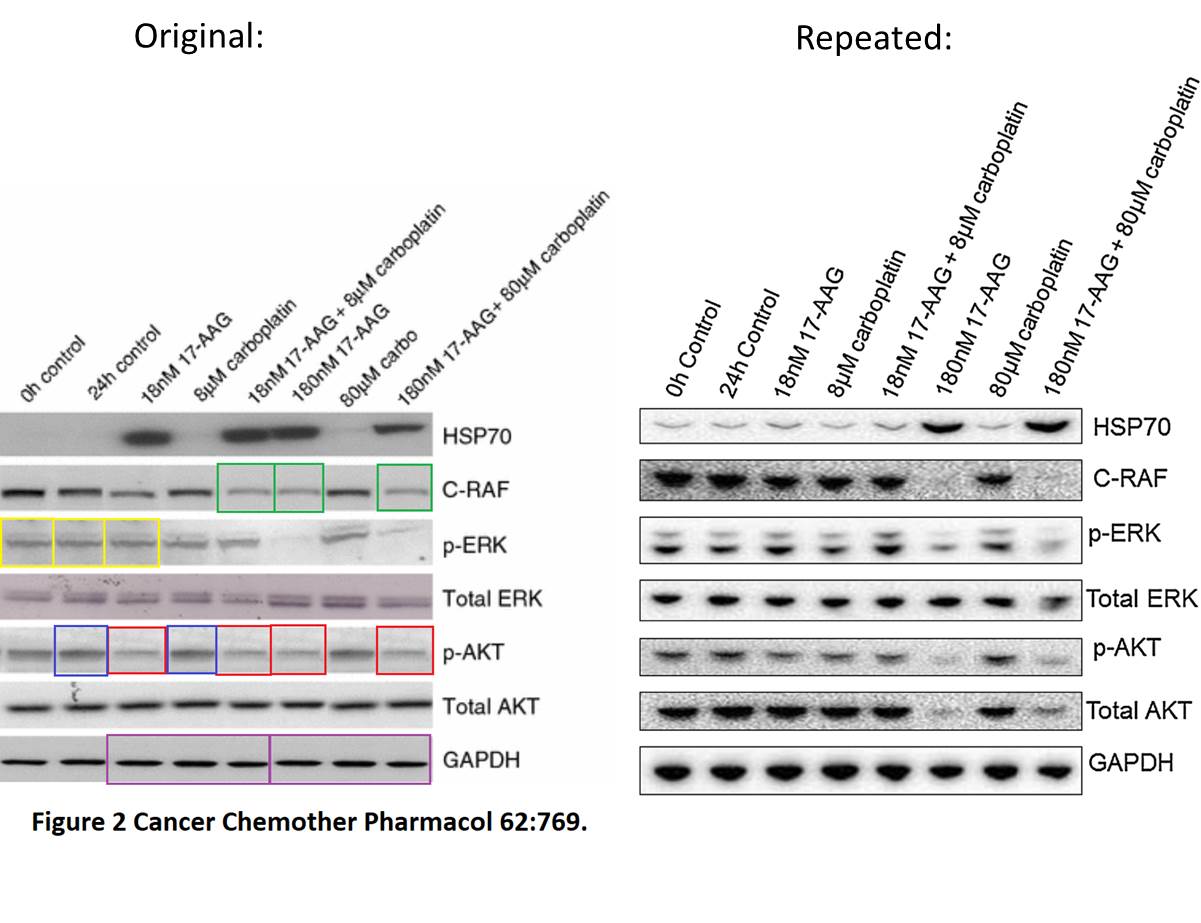
The journal has two editor-in-chief, both men. The one responsible for papers from Europe is Étienne Chatelut, from INSERM in France. I really don’t know anymore, is this a cultural peculiarity for French academics to publicly endorse data manipulation? But blaming it all on female collaborators is a new one for sure.
But maybe Workman was indeed a victim of some fraudulent females? After all, look what trouble the employment of females brought to ICR: Nazneen Rahman resigned as ICR professor after being accused of bullying by no less than 45 of her colleagues and losing her Wellcome Trust funding as the result. Incidentally, Rahman’s former PI and ICR professor Michael Stratton, was accused of bullying himself, in his current position as director of Sanger Institute. It would be interesting to know the full scope of the Rahman scandal, and who exactly led and supervised the ICR investigation into her alleged bullying. After all, we know that Banerji and Workman investigated themselves and found Ann Jackson and Nivedita Sain guilty. ICR is a strange place.
The named person in charge of Workman et al investigation is ICR professor and academic dean Clare Isacke, she of course never replied to my emails. On 13 February she wrote to a colleague, who complained of receiving emails from the data integrity sleuth Clare Francis, as well as this offensive link:
“Meanwhile, yes I am fully aware of the Clare Francis emails and the PubPeer postings and all the allegations either have been or are being fully investigated. I am the ICRs “named person” so am in charge of the investigations”
Maybe Isacke is simply afraid to displease her boss she is supposed to investigate. After all, it is the ICR CEO Workman who makes the final decision in misconduct investigations, as per protocol. And women have to tread carefully at ICR, it seems.
Now, what about Workman’s other papers then, which feature neither Sain nor Jackman? I presented some in my previous article, and these were untainted by their presence. Maybe this is why Isacke and ICR chose to ignore that evidence? Or maybe Workman’s loyal inquisitors are about to smoke out another female saboteur, who knows.
Here another paper from PubPeer, corresponding last author Workman, again on the topic of HSP90 inhibitors: Holmes et al, Cancer Research 2008. The band cloning pattern resembles the one Sain and Jackson were pronounced guilty of.
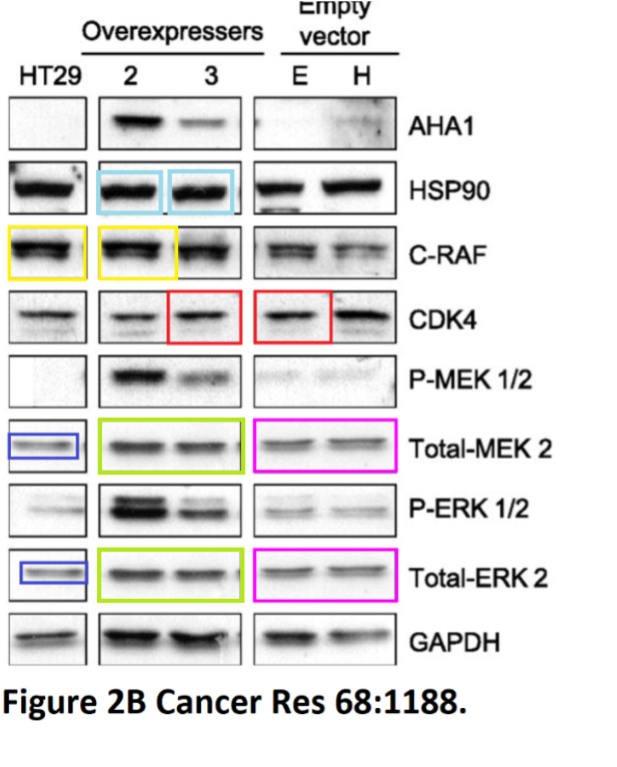
If this will ever be corrected, we can probably expect Jessica Holmes to admit full responsibility. Which of the many female co-authors will take the fall for Workman’s paper Sharp et al 2007, in the same AACR journal Cancer Research?

And how about this paper, where Workman is merely co-author though, Rayter et al Oncogene 2008?
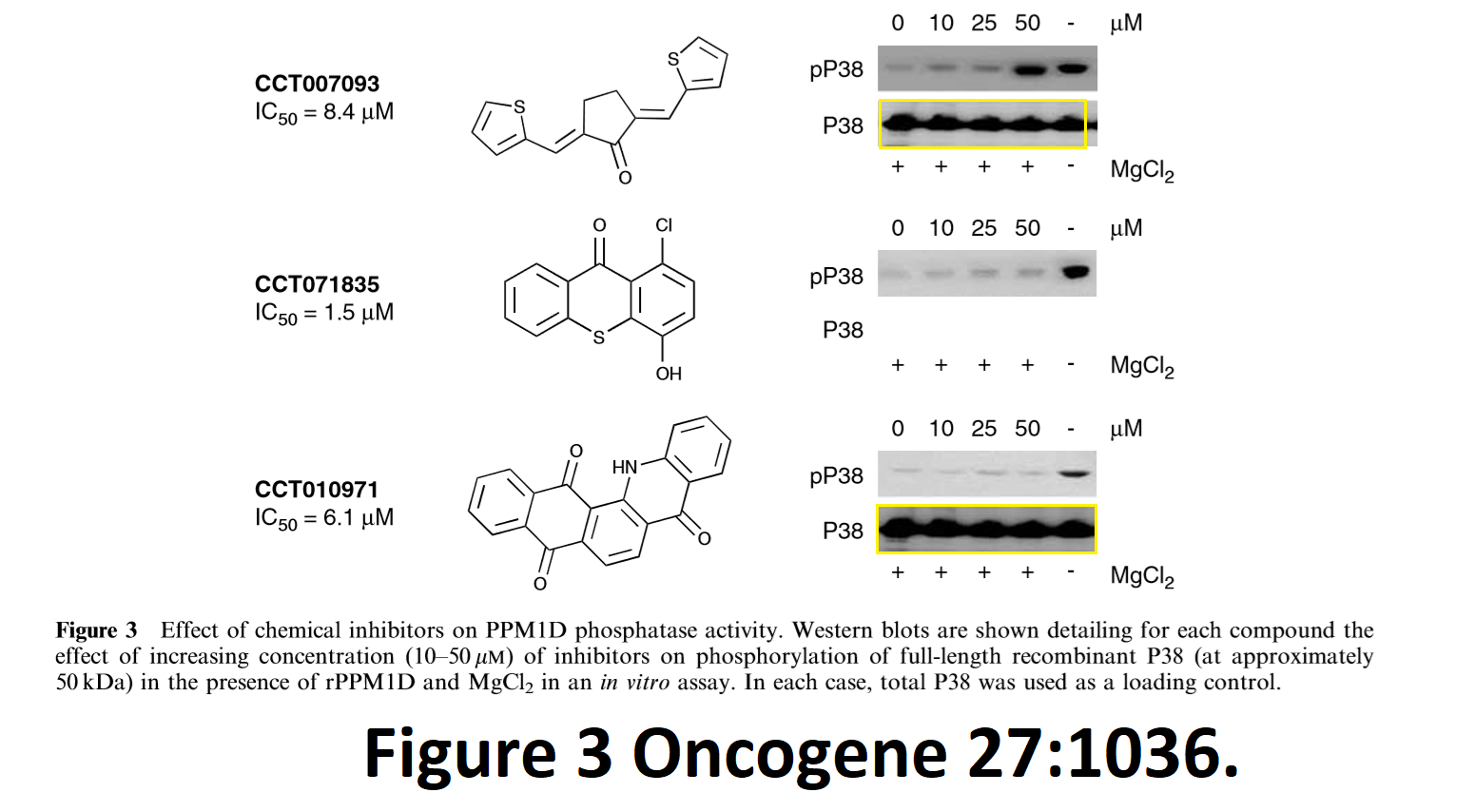
The last two authors here are Chris Lord and Alan Ashworth. The latter became ICR president in January 2011, and after a brief tenure of mere 3.5 years Ashworth moved in 2014 to San Francisco, California, to head the Helen Diller Family Comprehensive Cancer Center, as Senior Vice President for Cancer Services at UCSF. Not everyone at ICR was sad about Ashworth’s leaving, there were apparently numerous complaints “of all types”, as an inside source indicated, with the hogging a newly bought supercomputer for his own sequencing projects being a minor issue. Let it be said that the alleged bully Rahman used to work in Ashworth’s department. Workman took over the rule over ICR from Ashworth in 2014, and many saw him as a pleasant change from Ashworth, in many respects.
Doing Lord’s work
Lord used to be Ashworth’s postdoc, and he was that excellent in his research under Ashworth, that he was “internally promoted”, i.e., appointed as principal investigator outside of all calls and competition, normally mandated by ICR guidelines. In 2017, Lord was made professor. Maybe he will be now tasked with investigating his own papers? There is certainly plenty to do.
Ashworth’s claim to fame is in having discovered the BRCA2 oncogene. In fact, in his hands (watched over by Lord) the protein BRCA2, when requested by experimental strategy, can even mutate into different proteins, like APRIN. Which kind of proves the papers central claim in the title of Brough et al EMBO J 2012: that “APRIN is a cell cycle specific BRCA2-interacting protein required for genome integrity and a predictor of outcome after chemotherapy in breast cancer“.
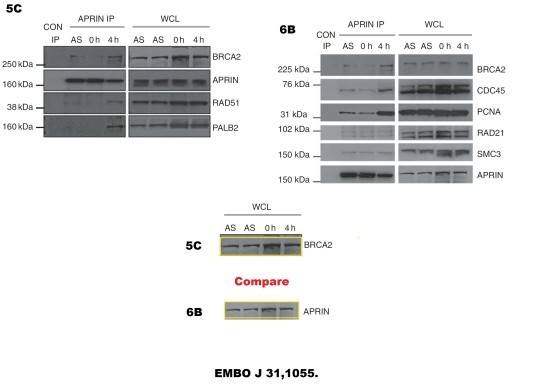
Here another duplication from Lord and Ashworth paper, in Iorns et al PLOS One 2009, and the loading control doesn’t match any of the two separate experiments it is made to stand for. Where did it originally come from? Which samples does it really show? Does it matter?
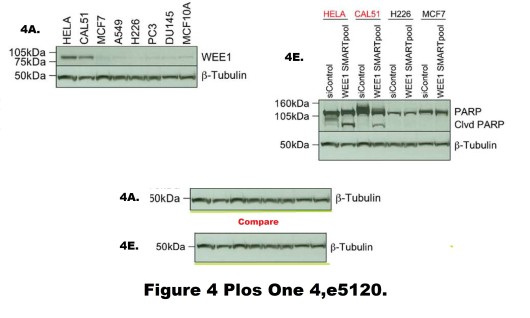
Or look at this interesting study Ashworth and Lord published in Cancer Research 7 years ago: Martin et al 2011. Incidentally, Ashworth is member of the AACR board of directors, which might interfere with this publisher’s investigation of his and likely also his ICR successor Workman’s (other) papers. In that paper, a novel cancer cure approach was established by specific targeting of the enzyme PINK using RNA interference (siRNA), which could be further potentiated by duplicating loading controls!
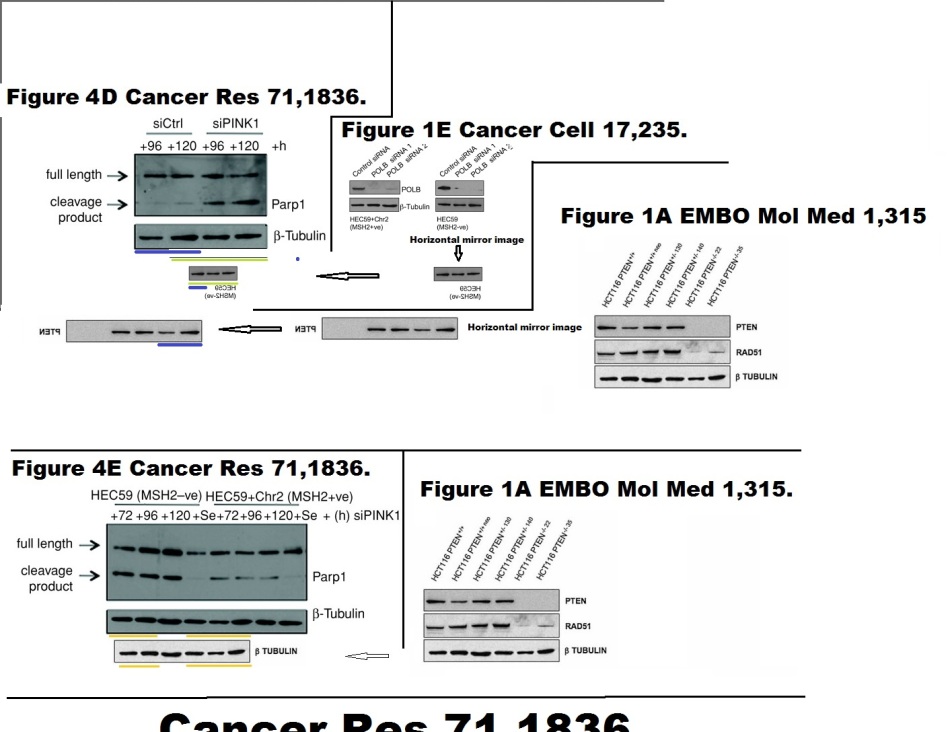
Of course it is not clear how translatable this loading control duplication is in the clinic, in patients. It works however reliably in other papers by Lord and Ashworth, even between publications showing utterly different cell lines, here Martin et al 2009 and Mendes-Pereira et al 2009, both published in EMBO Molecular Medicine:
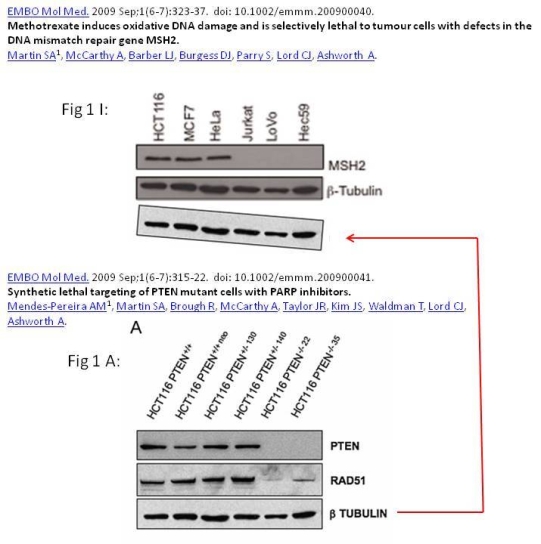
Incidentally, Ashworth is EMBO member, which makes the issue of the above 3 papers in EMBO Press even more embarrassing. There is an even more interesting paper by Lord and Ashworth, published as Martin et al 2010 in Cancer Cell, which means this paper is safe from retraction or correction for all eternity, because this is Cell Press. There is plenty on PubPeer, posted already 3 to 5 years ago, and nobody, absolutely nobody cares. Look at this beauty, this is how the authors intended to cure cancer by inhibiting DNA polymerases in vitro while copy-pasting western blot bands in silico:

It’s all just loading controls, innit? Who needs those anyway? It is so cumbersome to fret about loading controls when you achieved your perfect gel image, nicely showing an increase in signal of a certain protein. All you had to accidentally do was to load just a tiny amount more to that well. Or less, if your experimental strategy predicted a decrease of that protein in that sample. It is all perfectly acceptable when you know anyway which results to expect, right? Especially if you work at ICR, where cancer is being daily conquered by superior Englishmen intelligence?
This is why it is perfectly OK to make up some fake loading control in Photoshop to satisfy some silly publishing criteria and to placate peer reviewers. It’s all illustrations anyway, as ICR scientists explained in that correction above: it is “Figure Legend or main text of the article” which matter. Not the figures.
Hence also this, in the same Martin et al Cancer Cell 2010 paper. If you have an issue with that creative band reuse, try publishing in Cancer Cell yourself, then come back complaining.

Dr Sarah Martin is now senior lecturer at Bart’s Cancer Institute at Queen Mary University London. 3 years ago, a PubPeer user tried to report the issues to the institution, and was dismissed as “a malicious email campaign“. Which means, ICR male elite will have to find another woman to take the blame for that Photoshop creativity.
Professor Lord serves as a member of the Athena SWAN steering group, as we are educated on his website, to advance “the careers of women in science, engineering, technology, maths and medicine through excellent employment practice in higher education“. Maybe Lord learned it from his boss: Ashworth is remembered at ICR for having dedicated much of his attention to women in science. In any case, obviously ICR could not trust a woman with the important task of Athena SWAN.
There is more by Lord and Ashworth on PubPeer, and also by Workman, who as you probably already figured out, is responsible for reacting to investigate his as well as Lord and Ashworth papers. Good luck there. Also, the sheer amount of evidence precludes any meaningful external intervention, otherwise ICR would collapse or at least lose charity donations. Please give generously, it is for a good cause.

Donate!
If you are interested to support my work, you can leave here a small tip of $5. Or several of small tips, just increase the amount as you like (2x=€10; 5x=€25). Your generous patronage of my journalism will be most appreciated!
€5.00


Sarah Martin appears on Pubpeer star separately from Lord and Ashworth:-
As first author.
2008. https://pubpeer.com/publications/2759A34758691741B87D49DFB05C3E
2005. https://pubpeer.com/publications/8E38ECD6759C2479400E4306A749EB
As middle author.
2006. https://pubpeer.com/publications/C961F8BD02A1C6B26EDD0358BEE8FC
The senior author on all 3 papers retracted a 2004 paper in 2015 for data manipulation
https://pubpeer.com/publications/AB503FE52E95FA64E33D8101F419FB
Retraction notice
http://www.jbc.org/content/290/36/22311.full
“This article has been withdrawn by the authors. An investigation conducted at the Roswell Park Cancer Institute determined that the flow cytometry data shown in Fig. 5B had been manipulated.”
https://retractionwatch.com/2015/09/04/investigation-leads-to-retraction-of-breast-cancer-paper-second-for-one-author/
This is in no way meant to diminish the responsibility of Alan Ashworth, or Chris Lord, for their own papers.
Sarah Martin’s official bio confirms lineage.
https://www.bci.qmul.ac.uk/en/staff/item/sarah-martin
See “profile”
“I then moved to a postdoctoral position in the Mount Sinai School of Medicine in New York to join Dr. Toru Ouchi’s group, where I investigated the role of BRCA1 and its functional binding partners, specifically investigating the regulation of caspase-3 activation by BRCA1 phosphorylation. I was awarded a postdoctoral fellowship from the New York State Health Research Science Board.
In 2006, I joined Prof. Alan Ashworth’s group in the Breakthrough Breast Cancer Research Centre in the Institute of Cancer Research, London. Here, I carried out high-throughput RNAi and compound screens to indentify synthetic lethal interactions with deficiency in the DNA mismatch repair pathway.”
LikeLike
Its all very depressing.
LikeLike
Is it really depressing? Surely it is better that problematic data come to light? In the old days, before journals became electronic, the image quality was only as good as grainy paper. It was extremely difficult to tell if images were the same, or very similar. There were also no electronic means to discuss problematic data. Those things have changed.
LikeLike
Of course….agree…its depressing it happens and on this scale. Its also depressing there is no systematic effort to bring the perpetrators to justice. We need a science police.
LikeLike
The perpetrators’ “virtue signalling”, i.e. that they are trying to cure the terrible disease of cancer (through photo shop), the part in brackets is not stated, is galling, but I hope that it makes many laugh.
LikeLike
Its disgusting…..these people should be police reported.
LikeLike
All you readers should send expression of concerns to the institutions with copies to funding agency and journals involved – and spread the news and encourage other scientsts to wake up.
A Powerpoint presentation togehter with a youtube movie for the separate cases may also help convincing the leadership to take action. I have good experience with such a strategy from some other cases.
If more scientists engage against this misbehaviour I think it will help a lot.
LikeLike
Good idea….if you got experience perhaps you could try it here with this case.
LikeLike
“A Powerpoint presentation togehter with a youtube movie for the separate cases may also help convincing the leadership to take action.”
Paul Workman is the “leadership”.
LikeLike
He seems very good with PPT and photoshop….
LikeLike
The funding agencies don’t care, and one of them was happy to accept an honoary doctorate for its CEO. Important funding agency for the Sarah Martin/Alan Ashworth problematic publications were:-
Cancer Res. 2011 Mar 1;71(5):1836-48.
“Cancer Research UK and Breakthrough Breast Cancer. We acknowledge NHS funding to the NIHR Biomedical Research Centre.”
Cancer Cell. 2010 Mar 16;17(3):235-48.
“Cancer Research UK and Breakthrough Breast Cancer. We acknowledge NHS funding to the NIHR Biomedical Research Centre. ”
EMBO Mol Med. 2009 Sep;1(6-7):323-37.
“Cancer Research UK and Breakthrough Breast Cancer. We acknowledge NHS funding to the NIHR Biomedical Research Centre.”
These problematic Sarah Martin/Alan Ashworth publications were pointed out to the leadership of the Institute of Cancer Research (Paul Workman and Jonathan Pines) 9th Jan 2018.
The response of the Institute of Cancer Research leadership was to award former Cancer Research UK CEO Sir Harpal Kumar an honorary doctorate on 10th July 2018.
https://www.icr.ac.uk/news-archive/broadcaster-victoria-derbyshire-and-former-cancer-research-uk-ceo-sir-harpal-kumar-awarded-honorary-doctorates
LikeLike
Apparently there are numerous internal informants/moles at ICR in this case and the Nazneen Rahman case.
LikeLike
You can see problematic data in their publications. Don’t need to be an informant/mole to look at the data.
LikeLike
It is essential that the fake data is collected and presented in such a way that most people will quickly understand the problem.
I liked Leonid’s focus on «guilty» women! Maybe that can ignite some women to actively do more to get rid of these arrogant businessmen.
LikeLike
Another ICR story ….from Wikipedia….. https://en.wikipedia.org/wiki/Laurence_Pearl
In 2009 he was appointed Head of the new School of Life Sciences at the University of Sussex, relocating his laboratory to the MRC Genome Damage and Stability Centre, where he holds the position of Professor of Structural Biology.
In 2017 he was embroiled in a spat with Sussex Student’s Union’s student newspaper, The Badger. He accused its journalists of publishing ‘fake news’ and preparing for careers at The Sun after the outlet published an article about some of the difficulties faced by students within his department.[13]
In 2017 he announced that he would be standing down as Head of the School of Life Sciences at Sussex. [14]
From 1st October he took up a joint appointment as Head of the Division of Structural Biology at the Institute of Cancer Research while continuing as Professor of Structural Biology in the Genome Damage and Stability Centre at the University of Sussex.
Hmmm………….. so Prof. Pearl moved back to the place where you can tell students who complain that they should shut up with their fake news?!?!!?
LikeLike
From cashed version of The Badger (http://webcache.googleusercontent.com/search?q=cache:7h0afXYwk8oJ:thebadgeronline.com/2017/05/laurence-pearl-steps-down-life-sciences/&num=1&client=safari&hl=en&gl=dk&strip=1&vwsrc=0)
However, his tenure as the Head of Life Sciences has not been without controversy, with The Badger recently running a report on some of the difficulties faced by its students. The students condemned the school’s administrative errors, claiming malpractice that did not tally with Sussex Life Science’s commendable ranking and National Student Survey (NSS) scores.
One postgraduate commenting on the article about their experience, stated: “[it is an] extremely poor and toxic place, this Life Sciences Department”.
Professor Pearl took to Twitter
] to air his grievances about the article, dismissing its contents as fake news, while demanding an interview as a right of reply. He has been approached by The Badger three times for an interview, and has failed to take up these offers.
LikeLike
The original The Badger article was removed, which was of course never any form of censorship. But this being the internet: https://web.archive.org/web/20170405191419/http://thebadgeronline.com/2017/04/students-scorn-school-life-science/
LikeLike
And how about this paper, where Workman is merely co-author though, Rayter et al Oncogene 2008?
They’ve had 10 years to notice and provide the missing P53 band in Figure 3.
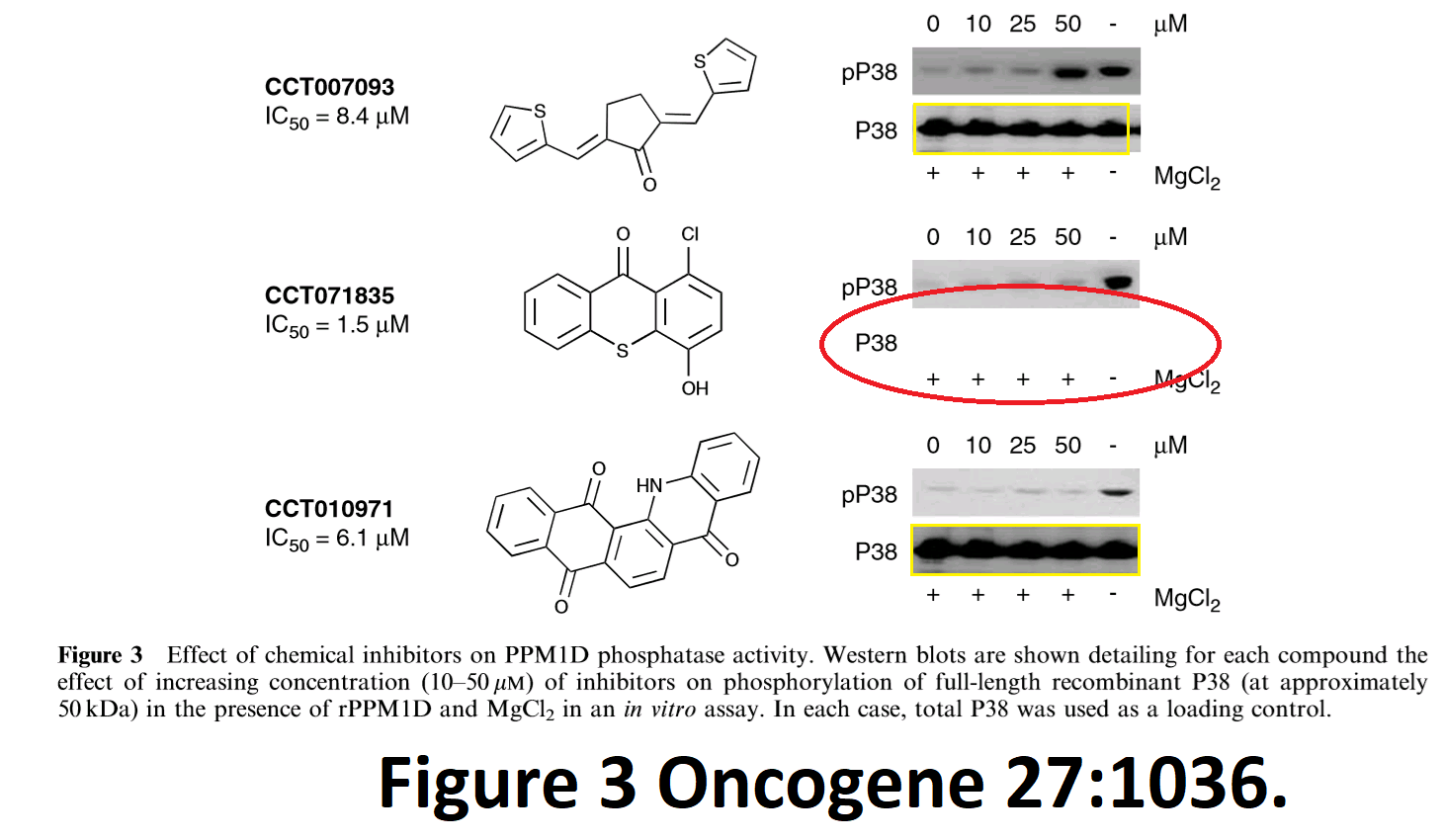
LikeLike
That points in one direction and one direction only. ASHWORTH & LORD.
From an insiders explanation I understand Workman was not close to the research, he may have been easy to run things by. Its not an excuse but in a high intensity/misguided environment focused strictly on medicinal leads…….that could enable a lot of ‘problematic ppl’ to manipulate and ‘get seen’.
Not an excuse but a note.
LikeLike
It is a paper in “Oncogene”. If one of the present two editors-in-chief has not noticed anything the matter with this paper in 9 years he is unlikely to notice anything the matter given another year, or two in Oncogene. The likelihood of anything being corrected is close to zero.
https://pubpeer.com/publications/1CCAC58543784D1B17C8416A6D97C2
LikeLike
Someone should start a petition to bring this to the attention of our policy makers. Academia desperately needs to change the way it works- the lack of oversight being one of the major problematic aspects that opens the door to bullying of juniors and fiddling with results by PIs whenever it suits.
LikeLike
Dr Sarah Martin is now senior lecturer at Bart’s Cancer Institute at Queen Mary University London.
Is this the same Sarah Martin whose collaborations with Toru Ouchi have been receiving some attention at Pubpeer lately?
https://pubpeer.com/search?q=martin+ouchi
Ouchi’s various collaborations have accrued an impressive number of entries at PB, is all I can say.
https://pubpeer.com/search?q=ouchi
LikeLike
Going a little bit off-topic here, but on the subject of Toru Ouchi, a few years ago Fernando Pessoa observed that
“According to his insitutional website Toru Ouchi is editor-in-chief of four journals.
…
Editor-in-Chief: Int. J. of Cancer Research and Molecular Mechanisms (2014-present)”
The “Int. J. of Cancer Research and Molecular Mechanisms” is brought to us by the publishers Sci Forschen. Despite the Germanic name, and the US accommodation address, “Sci Forschen” turns out to be a trio of tech scammers in Hyderabad, presumably alumni of OMICS who decided to go freelance. They’ve been on Beall’s List right from the start on account of being predatory lowlives.
Is Ouchi really that desperate to pad out his CV?
LikeLike
“Is this the same Sarah Martin whose collaborations with Toru Ouchi have been receiving some attention at Pubpeer lately?”
Yes.
Sarah Martin’s official bio confirms lineage.
https://www.bci.qmul.ac.uk/en/staff/item/sarah-martin
See “profile”
LikeLike
Clearly copy-pasted images. This never ends well for a JBC paper.
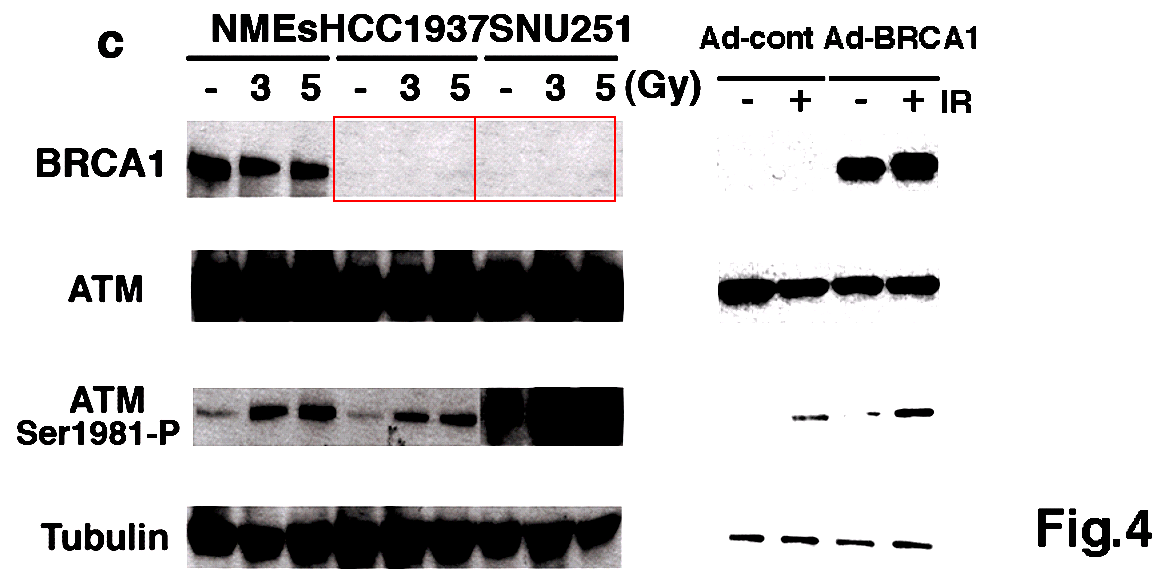
LikeLike
Dr Sarah Martin is now senior lecturer at Bart’s Cancer Institute at Queen Mary University London.
Problematic data director Bart’s Cancer Institute Queen Mary University London.
https://www.bci.qmul.ac.uk/en/staff/item/nick-lemoine
Profile section.
“I was Professor of Molecular Pathology at Imperial College London, where I was Director of the Cancer Research UK Molecular Oncology Unit and the first Director of the National Translational Cancer Research Centre at Hammersmith Hospital, before moving to become Director of the Barts Cancer Institute in 2005.”
Same person.
Cancer Gene Ther. 2001 Apr;8(4):308-19.
Herpes simplex virus thymidine kinase/ganciclovir-induced cell death is enhanced by co-expression of caspase-3 in ovarian carcinoma cells.
McNeish IA1, Tenev T, Bell S, Marani M, Vassaux G, Lemoine N.
Author information
ICRF Molecular Oncology Unit, Imperial College School of Medicine, Hammersmith Hospital, London, UK.
Figure 5.
Figure 6D.
Same data in Cancer Gene Ther. 2001 Apr;8(4):308-19 and Cell Death Differ 2001 Mar:8(3):256-64 to represent caspase-3 and pro-caspase 3.
LikeLike
First author of Cancer Gene Ther. 2001 Apr;8(4):308-19, Iain McNeish, is currently: https://www.imperial.ac.uk/people/i.mcneish
Cancer Gene Ther. 2001 Apr;8(4):308-19 is listed in his official list of publications, page 5.
https://www.imperial.ac.uk/people/i.mcneish/publications.html
LikeLike
Senior author Cancer Gene Ther. 2001 Apr;8(4):308-19 is a big wheell in the MRC (UK).
https://www.bci.qmul.ac.uk/en/staff/item/nick-lemoine
See “Profile”.
“I am currently Chair of Trustees of the Medical Research Foundation (MRC’s independent charity).
I have previously been Chairman of the MRC Clinical Research & Career Development Panel and the NIHR Clinician Scientist Appointments & Review Panel. I chaired the MRC Stem Cell Fellowship Panel, the CR-UK Clinician Scientist and Senior Clinician Fellowship Panel and the MRC Experimental Medicine Review Panel for the Molecular & Cellular Medicine Board. I was a long-serving member of the Gene Therapy Advisory Committee at the Department of Health, as well as the CR-UK Science Funding Committee, MRC Molecular & Cellular Medicine Board, ”
“my research into the molecular genetics of cancer and gene therapy has been funded by programme grants from MRC”.
Did the MRC look at the data in his papers? If so what was their conclusion?
https://pubpeer.com/publications/E76D4CD96F41333C88C84A8EFBC57C
https://pubpeer.com/publications/C45AFF699177A36A92E89E1F043FA9
https://pubpeer.com/publications/79C10FCB7F35089F52CD952E16B7CA
https://pubpeer.com/publications/6F4C2DA11A065E67FC11AC7E20A72E
https://pubpeer.com/publications/16410BD255E583D34D1283B3F3A544#9
https://pubpeer.com/publications/8BAF0817EB8780F86BF8819410FC32
https://pubpeer.com/publications/9F2F1B8EF37583B70D7BC3416F0D65
https://pubpeer.com/publications/1D2508809F94391C87821E79A3E93D
https://pubpeer.com/publications/B13CC0BC29812FA9F444F5832EE1EE
https://pubpeer.com/publications/4E60850BAF0772C24BBF79A23265B3
LikeLike
In support of a 1676 letter concerning certain little animals found by Antonie van Leeuwenhoek in vast quantities in common water, snow-water, well-water, and such water, which was read out to fellow of the Royal Society, London in 1677 we have:-
http://lensonleeuwenhoek.net/content/1677-confirm-his-observations
“several testimonials from persons of good credit” in Delft
“May 18 Benedict Hahn and Henry Cordes, Lutheran pastors in Delft, wrote in Latin to the Royal Society attesting to having seen microbes in Leeuwenhoek’s infusions (translations from the Collected Letters, vol. 2, pp 257-271). “We saw at least 200 living creatures in this 50th part of water; little animals which moved and swam in the water.”
June 2 Robert Gordon, medical student in Delft, wrote to the Royal Society, also in Latin. “I saw as many as 20,000 of those little animals in a quantity of pepper-water not exceeding the size of a grain of millet.”
August 13 Aldert Hodenpijl wrote in. “In that small Quantity of water, I saw above thirty thousand Living Creatures.”
August 21 Johannes Boogert, notary, Robert Poitevin, doctor, and W. van der Burch, lawyer, wrote to the Royal Society in Latin. “We have observed with our own eyes that each of the 90 parts contained more than 500 little animals.”
August 30 Alex Petrie, pastor of the English Congregation in Delft, wrote in English to Royal Society. Leeuwenhoek sent a Dutch translation, too. “… that in so small a quantity of water I should see such vast number of those little animals.””
These testimonials were before photography was invented. We may view these testimonials as quaint, or laughable, but they had no other means of confirmation at that time.
Could “persons of good credit” confirm that prof Nick Lemoine’s duplications and assemblages in Cancer Gene Ther. 2001 Apr;8(4):308-19 are true and accurate representations of reality? I don’t think anybody is laughing now.
LikeLike
https://www.bci.qmul.ac.uk/en/staff/item/sarah-martin
See “funding”
2012-2015
Medical Research Council
Characterization and impact of novel regulators of mitochondrial DNA integrity on tumourigenesis
£416,652
LikeLike
Two reasons Director Barts Cancer Institute, prof Nick Lemoine, dismissed problematic data in Sarah Martin’s papers in 2015:-
to keep hands on £416,652 MRC grant,
fear that any retractions would cause people to look more generally at his insitutute’s publications, including his own.
LikeLike
News does not cross the English Channel.
https://www.statnews.com/2016/06/24/science-fraud-second-chance/
https://retractionwatch.com/2012/12/13/funding-agency-sanctions-bulfone-paus-and-former-postdoc/
LikeLike
The British way.
https://retractionwatch.com/2014/07/01/geneticist-retracting-four-papers-for-significant-problems/
https://www.timeshighereducation.co.uk/news/grant-winners-27-march-2014/2012221.article
Biotechnology and Biological Sciences Research Council
Research Grants
Award winner: Neil Perkins
Institution: Newcastle University
Value: £384,474
DNA damage induced phosphorylation and regulation of NF-kappaB
LikeLike
In that paper, a novel cancer cure approach was established by specific targeting of the enzyme PINK using RNA interference (siRNA), which could be further potentiated by duplicating loading controls!
Here’s another nice diagram from “Merianthera Verrucosa”, tracing images across three papers you mentioned:

Not just loading controls being tastefully reused.
LikeLike
Data across 4 papers.
LikeLike
Clearing up a bit of confusion. Much more similar than you would expect , except the samples are different.
LikeLike
Very similar blots across 3 papers.
LikeLike
Nasty stuff…NASTY….
LikeLike
Second 2018 Paul Workman correction.
Clin Cancer Res. 2011 Mar 15;17(6):1561-70. doi: 10.1158/1078-0432.CCR-10-1927
2 comments on PubPeer (by: Cypovirus 5, Hoya Camphorifolia)
. Epub 2011 Jan 28.
A phase I study of the heat shock protein 90 inhibitor alvespimycin (17-DMAG) given intravenously to patients with advanced solid tumors.
Pacey S1, Wilson RH, Walton M, Eatock MM, Hardcastle A, Zetterlund A, Arkenau HT, Moreno-Farre J, Banerji U, Roels B, Peachey H, Aherne W, de Bono JS, Raynaud F, Workman P, Judson I.
Author information
1
Cancer Research UK Cancer Therapeutics Unit, The Institute of Cancer Research, Sutton, Surrey, United Kingdom.
2018 correction.
http://clincancerres.aacrjournals.org/content/24/21/5488
“In the original version of this article (1), Fig. 3A included duplicate gel lanes for the third patient from the left and mislabeled lanes for the fifth patient from the left. The authors contacted the Editors and provided original images to correct the figure. Errors have been corrected in the latest online HTML and PDF versions of the article. The authors regret these errors.”
LikeLike
Pingback: Eric Lam: shady research at Imperial to cure breast cancer – For Better Science
2019 mega-correction for:
Silencing of HSP90 cochaperone AHA1 expression decreases client protein activation and increases cellular sensitivity to the HSP90 inhibitor 17-allylamino-17-demethoxygeldanamycin.
Holmes JL1, Sharp SY, Hobbs S, Workman P.
Author information
1
Cancer Research UK Centre for Cancer Therapeutics, The Institute of Cancer Research, Haddow Laboratories, Sutton, Surrey, United Kingdom.
https://pubpeer.com/publications/C6FC87A48D3FA4FBE14988F4C7DA6C
2019 correction.
http://cancerres.aacrjournals.org/content/79/1/286
In the original version of this article (1), some images were inadvertently duplicated in Fig. 2B, and in addition there was splicing of images in Fig. 2C (left panel) that was clear but not indicated by a vertical line. The findings and conclusions of the article remain the same. The errors have been corrected in the latest online PDF version of the article. The authors regret this error.
Reference
1.↵Holmes JL, Sharp SY, Hobbs S, Workman P. Silencing of HSP90 cochaperone AHA1 expression decreases client protein activation and increases cellular sensitivity to the HSP90 inhibitor 17-allylamino-17-demethoxygeldanamycin. Cancer Res 2008;68:1188–96
LikeLike